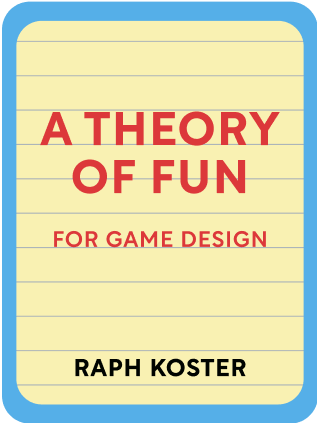

This article is an excerpt from the Shortform book guide to "A Theory of Fun for Game Design" by Raph Koster. Shortform has the world's best summaries and analyses of books you should be reading.
Like this article? Sign up for a free trial here .
What is the meaning of fun in terms of game design? How can understanding the psychology of fun help you design a better game?
Psychologically, fun is the release of dopamine you get when you learn something or complete a task. This is why Raph Koster asserts that games must include an element of learning, comprehension, and mastery to be enjoyable.
If you’re designing a game, here are some things to consider.
What Is Fun?
Most people play games to have fun. But what is the meaning of fun?
On a neurobiological level, fun is a boost of dopamine when we learn something or master a task. We are evolutionarily programmed to enjoy learning, just like we enjoy sex, because learning improved our chances of survival.
So why are games fun? Fun from games comes from learning, comprehension, and mastery.
Learning in games is different from learning in reality. Games present an environment where you can learn and have no pressure from consequence. As a result, games can be unpredictable without causing the player anxiety.
- In normal life, where there are real consequences, we like predictability. We like the legal system, pasteurized milk, and lightning rods.
- We like unpredictability only when it’s confined within an enclosure of predictability, like games on a tabletop or TV shows on a television.
Humans are natural learners. Babies instinctively play games like hide-the-object. They are learning patterns, such as how the physics of the world work (hence why they knock over cups gleefully).
But somewhere in adulthood, society starts to stigmatize games as frivolous. This is a shame, since there’s a lot that can be taught through games.
Yet even still, we continue learning from abstract models of reality. For instance, we practice speeches in front of mirrors, or we run fire drills to prepare for a real fire.
Boring Games
Boredom is the opposite of learning. The brain is constantly looking for new data to reinforce existing patterns, or new patterns to learn. When there’s nothing new to learn, boredom results.
In games, boredom can arise in these situations:
- The player understands how the game works before the game ends. This causes the game to be dismissed as trivial.
- There is depth to the game, but this is below their level of interest.
- There seem to be no patterns whatsoever. A game that is too chaotic is unenjoyable.
- The game reveals its patterns too quickly or too slowly.
- The player masters the game entirely. There is nothing new to learn.
- The player cheats and finds a more direct path to the goal. This bypasses the patterns that the game asked the player to master.
It’s ok for games to become boring. Every game is destined to become boring.
- Humans are efficient problem solvers, and they want to reach the goal as expediently as possible, by making things predictable. Sometimes this involves cheating.
Once a game gets boring and doesn’t teach anything new, it needs to encourage you to move on. Games should not exist to fulfill power fantasies.
- Power fantasies provide comfort—you can exercise mastery with little risk, and get a break from a challenging life in reality.
- The risk here is that people get false positive feedback in a static world without improving or learning anything new. Given how rapidly the world is changing, this complacency is maladaptive.
Therefore, as a game designer, you must know what your game is about, and make sure it teaches that one thing.
Why Is School Boring?
If boredom arises when there is nothing to learn. So why are people bored in school or after work, when there is so much to learn?

———End of Preview———
Like what you just read? Read the rest of the world's best book summary and analysis of Raph Koster's "A Theory of Fun for Game Design" at Shortform .
Here's what you'll find in our full A Theory of Fun for Game Design summary :
- What makes games fun
- Why it's important for games to have a learning component
- Whether or not games should be considered art






